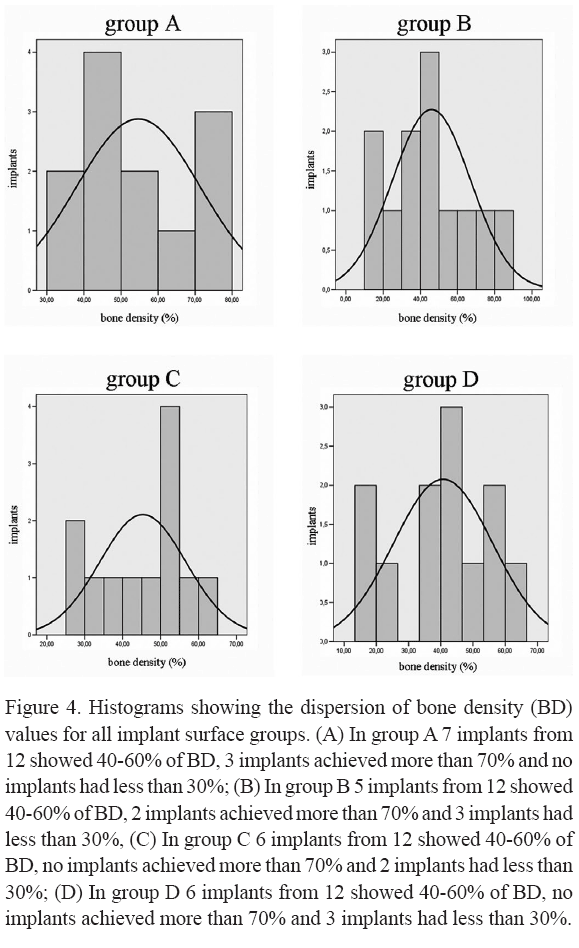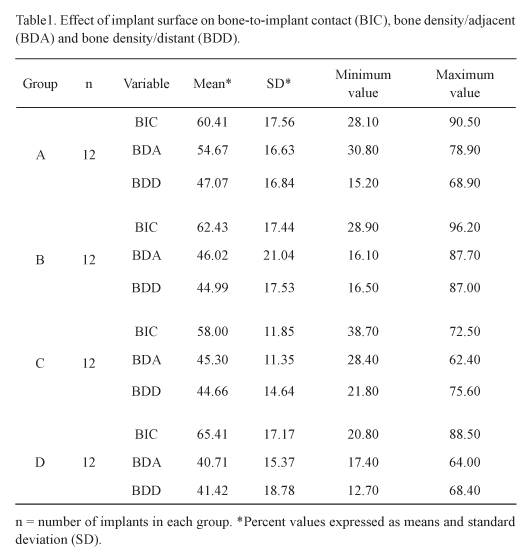Among the different properties that influence bone apposition around implants, the chemical or biochemical composition of implant surface may interfere on its acceptance by the surrounding bone. The aim of this study was to investigate if a biofunctionalization of implant surface influences the bone apposition in a dog model and to compare it with other surfaces, such as a microstructured created by the grit-blasting/acid-etching process. Eight young adult male mongrel dogs had the bilateral mandibular premolars extracted and each one received 6 implants after 12 weeks, totaling 48 implants in the experiment. Four groups of implants were formed with the same microrough topography with or without some kind of biofunctionalization treatment. After histomorphometric analysis, it was observed that the modified microstructured surface with a "low concentration of the bioactive peptide" provided a higher adjacent bone density (54.6%) when compared to the other groups (microstructured + HA coating = 46.0%, microstructured only = 45.3% and microstructured + "high concentration of the bioactive peptide" = 40.7%), but this difference was not statistically significant. In conclusion, biofunctionalization of the implant surface might interfere in the bone apposition around implants, especially in terms of bone density. Different concentrations of bioactive peptide lead to different results.
bioactive peptide; dental implants; histomorphometric analysis; animal study





